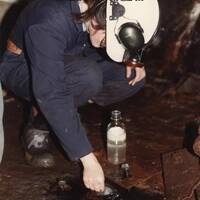1.

Howie 1 year ago
#6 Type O blood is called "O" because of its historical classification based on the presence or absence of certain antigens on the surface of red blood cells. In the early 1900s, Austrian immunologist Karl Landsteiner discovered blood types and named them based on the antigens they contained:
Type A has A antigens.
Type B has B antigens.
Type AB has both A and B antigens.
Type O lacks both A and B antigens.
Initially, Landsteiner called it "C," but the name was later changed to "O" from the German word "ohne," meaning "without," signifying the absence of these antigens. This is why Type O blood is unique—it's compatible with all blood types in emergencies, making it a universal donor.
Type A has A antigens.
Type B has B antigens.
Type AB has both A and B antigens.
Type O lacks both A and B antigens.
Initially, Landsteiner called it "C," but the name was later changed to "O" from the German word "ohne," meaning "without," signifying the absence of these antigens. This is why Type O blood is unique—it's compatible with all blood types in emergencies, making it a universal donor.




Type A has A antigens.
Type B has B antigens.
Type AB has both A and B antigens.
Type O lacks both A and B antigens.
Initially, Landsteiner called it "C," but the name was later changed to "O" from the German word "ohne," meaning "without," signifying the absence of these antigens. This is why Type O blood is unique—it's compatible with all blood types in emergencies, making it a universal donor.
Still, in German it's called "Blutgruppe Null" - so, zero after all...